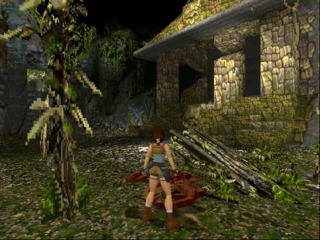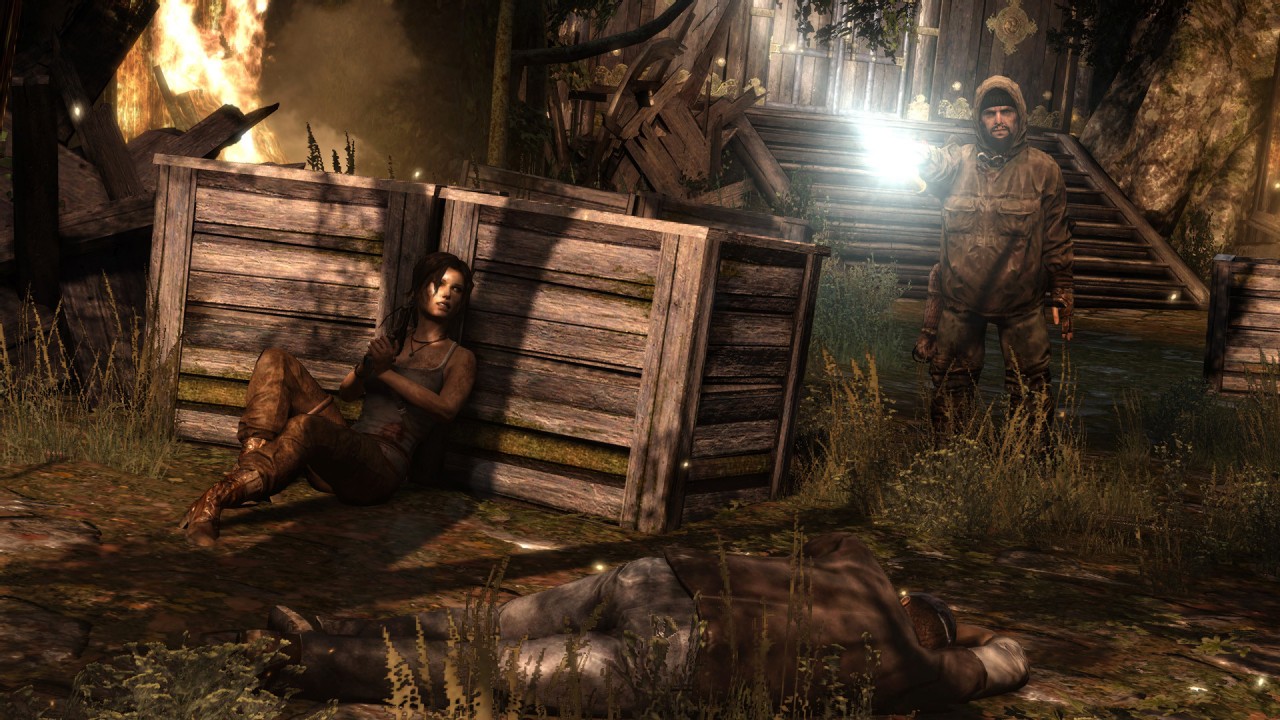
Tomb raider 1 3dfx patch Pc#
This move to 3D was creating brilliant 3D polygonal worlds and pushing PC gaming (as well as console gaming particularly with the release of systems like the PlayStation) into 3D.

In other words, Mark Brown is acknowledging that combat mechanics have gotten more 'sophisticated' and accordingly more 'deep' and 'involving' in the recent games (TR2013 and Rise), while also claiming that traversal mechanics have gotten less 'sophisticated' and accordingly less 'deep' and less 'involving'.Starting in the early and mid 90’s computer graphics were increasingly utilizing 3D. Perhaps the most obvious example is first-person parkour game, Mirror's Edge." Surely we can do something more interesting than this? Thankfully, we can, and a number of smaller games show us that movement can still be as deep and involving as, like, murdering a dude. But traversal has become practically automated. These mechanics make combat in Tomb Raider dynamic and interesting. looks even worse when you compare it to the way the franchise's combat has evolved. The slow decline of mechanical sophistication in Tomb Raider’s traversal. I think we also lost something in the transition to the ultra simple traversal controls we see in games like Rise of the Tomb Raider and Uncharted.

I like the way Hamish Todd uses of concept of sophistication here: "Hello! I'm Hamish, and I believe that sophisticated ideas can be communicated clearly and beautifully using software… Here are some articles of mine about classic video games and how they communicate clearly and beautifully."Īnd how Mark Brown uses the concept in his video: ". June: Quake 1 (DOS-PV release), Super Mario 64 (Japanese release) Now to be clear, the typical environment/encounter design in the game certainly does not allow for 'complex' or even 'interesting' combat (so I do not mention this as a defense of the combat encounters in the game), but perhaps this can serve as an example of how the controls can be used fluidly/spontaneously to negotiate the environment, once one has a sufficient level of 'mastery' of the controls. At the same time, perhaps just to give an example of what I mentioned earlier (that it can be rewarding to 'master' the controls):Ĭonsider something from a speedrun video, like this sequence in TR1's Unfinished Business: at in the video, Lara leaps off a high platform to directly engage an enemy, Lara rolls and jumps back onto the high platform to get a better position to engage the enemy, upon landing on the high platform Lara immediately turns to face that same enemy from the higher and more advantageous position, after defeating that enemy Lara turns to face a second enemy, as soon as the second enemy starts a 'line' of fire in her direction, Lara jumps and runs forward to avoid the predictable trajectory of the 'line' of fire while at the same time returning fire towards the enemy. I can totally how it could become "trash" in some folks' eyes, and I definitely wouldn't want to condemn that point of view in any way. Playing Tomb Raider on a PC at 800圆00 or 1024x768 resolution with perspective correction and other hardware accelerated features was a big selling point for the PC version.
Tomb raider 1 3dfx patch drivers#
Plus the PC port of Tomb Raider also saw patches for 3DFX, Matrox, and other video card drivers for 3D acceleration. While there were other 3D games on the PC, Quake being the obvious one, Tomb Raider did still stand out on the PC for being possibly the only good 3rd person 3D platformer for the time. Though Tomb Raider also did really well on the PC too. Sony launched their dual-analog controller in 1997, plus they were also hyping Tomb Raider like it was a first party title. Sony was touting Crash, despite not being a pure 3D platformer.

Sega l released an analogue controller for the Saturn with NiGHTS to compete with Nintendo. Super Mario 64 did set the new bar for 3D gaming that year. 2D platformers were pretty much dead in favor of polygons. November: Tomb Raider PS1 and DOS-PC releases, Bug Tooġ996 was really the year where 3D gaming became the dominate genres. October: Tomb Raider Sega Saturn release (UK Launch), Bubsy 3D (LOL) September: Crash Bandicoot, Super Mario 64 (US Launch), Pilot Wings 64 July: NiGHTS INTO Dreams (Japanese release)Īugust: Jumping Flash 2, NiGHTS INTO Dreams (US launch) June: Quake 1 (DOS-PC release), Super Mario 64 (Japanese release) March: Resident Evil (not the first game to use static backgrounds with polygon models, but RE did boost the popularity of these types of games) January: Duke Nukem 3D (uses similar graphics engine to Doom, but tries to incorporate platforming elements)


 0 kommentar(er)
0 kommentar(er)
